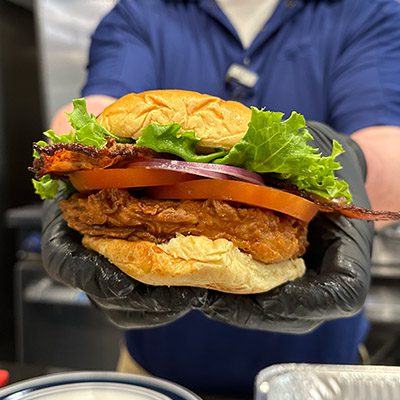
Restaurant Server Training Tips, Techniques, and Best Practices
Hastily training a new restaurant employee is an all-too-common yet unforgivable move in a restaurant. Often, after a quick conversation about the restaurant’s common issues and challenges, and the classic “just make sure you never do this” checklist, the new server is left to shadow an experienced server, or they’re given a few tables of their own.
This into-the-fire approach may sometimes work for experienced servers who just need to learn the nuances of your specific business, but why leave any new employee overwhelmed and uninspired?
By properly training new employees, you can reduce turnover and increase employee satisfaction, and it will help your restaurant exceed your guests’ expectations. Training current employees to effectively train your new hires also lightens the load for you and increases accountability within the team.
Let’s go over some of the biggest problems restaurateurs face when training their new servers and what can be done to improve the process.
Take the Time to Incorporate Core Values
Make time to sit with a new hire for at least half an hour at the beginning of their first day to discuss your restaurant’s core values, how you and your staff enact them, and why you’re passionate about the work that you do. Why? Firstly, your excitement (and values) will hopefully be contagious. Secondly, the fact that you’re taking the time to properly introduce yourself and your restaurant shows the new hire that you’re genuinely happy they’re here and that you care about your employees’ happiness and success.
Taking time to sit with a new employee to kick off their training will also instantly set you apart from many other restaurants. This small gesture early on can help a person feel greater pride in their workplace, which is key for employee retention.
Making your core values clear is also helpful because it can guide your new staff member, who is hopefully already a good cultural fit, to become a star team member.
Why Do, How Do, I Do, We Do, You Do
It’s easy to simply tell a new server how you approach all the different tasks within your restaurant. However, being told how to do something — on a day where you’re likely to learn how to do 40 different things — isn’t the most effective way to learn.
When training a server on an important task, go through the following five phases:
- Why Do
- How Do
- I Do
- We Do
- You Do
First, explain why a task must be done a certain way (“Why Do”). Then, explain how to do the task (“How Do”), demonstrate the task (“I Do”), do the task with them (“We Do”), then have them do the task alone to demonstrate their understanding (“You Do”). You now have an employee who is trained on a specific task.
Most training skips over the “Why Do” phase, but this is the most important step in training on any skill or task. Without the why, employees are likely to skip steps or impart their own little changes on your perfected process. When they know the big picture, the outcome, and the why, they are less likely to cut corners.
Use a Handbook
Creating and implementing an employee handbook can seem daunting, but it’s a great way to make sure your new hires have all the information they need to get started. It can incorporate your core values and behavioral standards but also little details like locker codes, where the cleaning supplies live, and staff and management phone numbers.
In the same vein, you likely already have a recipe bible for back-of-house, so you should also have a front-of-house bible. If you want your glasses polished the same way every single day, having your method documented in your front-of-house bible will ensure that any employee tasked with polishing will know how to do it right, even if it’s not their job. You don’t want smudges on a glass just because a bartender no-showed and you had to put a server on the task.
Be Available for Questions and Pick a Point Person
It’s crucial to emphasize that in your restaurant, there’s no such thing as a dumb question. All restaurant teams have different collective personalities, and if you create a culture of openness and learning, your new employee will feel comfortable coming to you with a question about anything. This will help them develop into a better employee long-term and allow them to pass on this knowledge (and patience) to a new employee down the line. You also don’t want employees making assumptions about how things work because they’re too intimidated to ask.
It’s also a great idea to give the server a point person or two — that isn’t you — who they can turn to for advice in their first weeks. Having someone to turn to in front of house as well as back of house is crucial for a server, because they’ll likely have questions about table numbers as well as ingredients in different dishes. Be sure to clear it with the point person first so they’re prepared to help onboard your new server.
On a macro level, this can help your team work more cohesively, as they’ll all be invested in the success of this new staff member. It can also help you bridge the social side of that famous front-of-house/back-of-house divide.
Highlight the Value of Salesmanship
A great restaurant server doesn’t just take orders — they’re also salespeople. Their job is to assist and enhance a customer’s experience and make sure they’re eating and drinking the very best things you offer. This can obviously also help your profit margins if your menu is properly optimized.
You can adjust the wording as you see fit, but teach your new servers to say this one thing: “Hello folks, my name is ______ and I’m here to ensure that we exceed your expectations today. If there is anything I can do to help with that, please let me know.”
Your staff’s goal is to ensure they give guests more than what they came in expecting. All your server has to do is make good on that promise.
Also, as a manager walks the floor, don’t have them ask tables “how is everything?” Instead, they can ask if everything is exceeding their expectations. If yes, fantastic! If no, then find out what hasn’t gone smoothly and fix it before they leave. Guest feedback is crucial for a restaurant, so train your servers and managers to seek it out. Enabling servers to use their judgment and give out free drinks, or a dessert, to smooth over a problem will empower them and please your guests.
When it comes to training your new servers, everything traces back to the values and the passion you have for your restaurant and your team. By thoroughly training your new server, providing them with the tools and information they need, and setting them up as part of a close-knit team, you can increase employee satisfaction and reduce turnover.
Source: Ryan Gromfin for Toast









